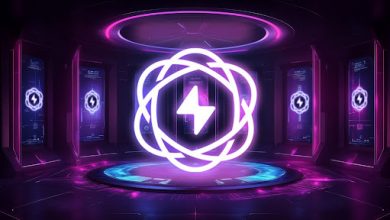Robotics Programming: Writing Code for Robotic Applications

Robotics programming is the backbone of modern robotics, enabling machines to perform complex tasks autonomously or semi-autonomously. With advancements in technology, robotics has found applications in various fields, such as manufacturing, healthcare, agriculture, and even space exploration. At the heart of these robotic systems lies programming, where developers write code to control the behavior, movement, and decision-making of robots.
Understanding the Basics of Robotics Programming
To start with, robotics programming involves developing algorithms that instruct robots on how to interact with their environment and achieve specific tasks. These algorithms control the robot’s sensors, actuators, and processing units, allowing it to perceive, process, and act on data. Robotics programming bridges the gap between a robot’s hardware and its intended functionality.
At its core, robotics programming is divided into several layers:
Perception:
This involves gathering data from the robot’s sensors (e.g., cameras, LIDAR, ultrasonic sensors) and interpreting it to understand the surrounding environment.
Decision-making:
Based on the interpreted data, the robot decides what actions to take. This could involve navigating through a space, identifying objects, or responding to user commands.
Actuation: Finally, the robot’s motors and actuators execute the chosen actions, such as moving an arm or navigating a path.
Robotics programming requires knowledge of both hardware and software, making it a multidisciplinary field. Developers need to understand the robot’s physical components and how to control them through code. Additionally, they must be familiar with algorithms, data structures, and real-time systems, as robots often operate in dynamic and unpredictable environments.
Choosing the Right Programming Language for Robotics
When it comes to programming robots, selecting the right language is crucial. Various programming languages are used in robotics, each with its strengths and weaknesses. The choice of language depends on factors such as the complexity of the task, the hardware platform, and the developer’s familiarity with the language.
Python:
Python is one of the most popular languages for robotics programming due to its simplicity, readability, and extensive libraries. It is often used in educational robotics and for rapid prototyping. Libraries like Robot Operating System (ROS) and OpenCV make Python a strong contender for tasks such as computer vision, machine learning, and simulation.
C/C++:
C and C++ are commonly used in robotics for low-level programming, especially when performance and real-time control are essential. These languages provide direct access to hardware, making them suitable for embedded systems and microcontrollers. Many robotics platforms, including ROS, support C++ for writing performance-critical code.
Java:
Java is another language used in robotics, particularly for developing complex applications with high levels of abstraction. Java’s platform independence and object-oriented nature make it a good choice for large-scale robotic systems, such as those used in industrial automation.
MATLAB:
MATLAB is often used in robotics for algorithm development, data analysis, and simulation. It is particularly popular in academic and research settings, where complex mathematical models and simulations are required.
Scratch and Blockly:
For beginners and educational purposes, visual programming languages like Scratch and Blockly are used. These languages allow users to create programs by dragging and dropping blocks, making it easier to understand the basics of programming without writing code.
Key Concepts in Robotics Programming
Writing code for robotic applications involves several key concepts that developers must understand and implement effectively. These concepts include kinematics, control systems, path planning, and computer vision.
Kinematics:
Kinematics is the study of motion without considering forces. In robotics, it involves calculating the positions, velocities, and accelerations of robot parts, such as arms and legs. Forward kinematics focuses on determining the end position of a robot’s joint configuration, while inverse kinematics calculates the joint angles needed to achieve a specific position.
Control Systems:
Control systems are essential for maintaining the stability and accuracy of robotic movements. They involve using feedback loops to adjust the robot’s actions based on sensor data. For example, a PID (Proportional-Integral-Derivative) controller is a common control system used in robotics to regulate speed, position, and force.
Path Planning:
Path planning refers to the process of determining a sequence of movements that a robot should follow to reach a target destination. Algorithms like A* and Dijkstra’s algorithm are often used for pathfinding in robotics. Path planning is crucial for autonomous robots that need to navigate through complex environments without human intervention.
Computer Vision:
Computer vision enables robots to interpret and understand visual information from cameras and sensors. It plays a vital role in tasks like object recognition, navigation, and inspection. Techniques such as image processing, feature extraction, and machine learning are used to enable robots to “see” and react to their surroundings.
Tools and Frameworks for Robotics Programming
Several tools and frameworks are available to help developers write and test code for robotic applications. These tools simplify the development process and provide functionalities such as simulation, debugging, and hardware abstraction.
Robot Operating System (ROS):
ROS is an open-source framework widely used in robotics research and development. It provides a collection of software libraries and tools for building robot applications. ROS offers features like message passing, device drivers, and simulation, making it a versatile platform for both beginners and experts.
Gazebo:
Gazebo is a powerful simulation tool often used in conjunction with ROS. It allows developers to simulate robots in realistic environments, testing their algorithms and behaviors before deploying them on physical hardware. Gazebo supports a wide range of robot models and sensors, making it an essential tool for robotics programming.
Arduino:
Arduino is a popular platform for building small-scale robotic projects. It consists of a microcontroller board and an easy-to-use programming environment. Arduino is often used in educational robotics and DIY projects due to its simplicity and affordability.
TensorFlow and PyTorch:
TensorFlow and PyTorch are deep learning frameworks commonly used in robotics for tasks like computer vision, natural language processing, and reinforcement learning. These frameworks provide tools for training and deploying machine learning models on robots.
V-REP (CoppeliaSim):
V-REP, now known as CoppeliaSim, is another popular simulation tool used in robotics. It allows developers to create and test robot models in a 3D environment, supporting a wide range of sensors, actuators, and scripting languages.
Challenges in Robotics Programming
While robotics programming offers exciting opportunities, it also presents several challenges that developers must overcome. These challenges include dealing with uncertainty, ensuring real-time performance, and managing complex systems.
Uncertainty:
Robots often operate in unpredictable environments, where sensor data may be noisy or incomplete. Dealing with uncertainty requires robust algorithms that can handle variations in data and still make accurate decisions.
Real-time Performance:
Many robotic applications require real-time performance, where the robot must respond to events within strict time constraints. Achieving real-time performance can be challenging, especially when dealing with complex computations and hardware limitations.
Complexity:
Robotic systems can be highly complex, involving multiple components, sensors, and software modules. Managing this complexity requires careful design and integration, as well as thorough testing to ensure that all parts of the system work together seamlessly.
Future Trends in Robotics Programming
The field of robotics programming is continually evolving, with new trends and technologies emerging that will shape the future of robotics. Some of the key trends include:
Artificial Intelligence and Machine Learning:
AI and machine learning are becoming increasingly important in robotics, enabling robots to learn from data and improve their performance over time. This trend is expected to lead to more intelligent and autonomous robots that can adapt to changing environments and tasks.
Edge Computing:
Edge computing involves processing data closer to the source (i.e., the robot) rather than relying on cloud-based systems. This reduces latency and improves real-time performance, making it a critical trend in robotics programming.
Human-Robot Interaction:
As robots become more prevalent in everyday life, improving human-robot interaction will be essential. This involves developing intuitive interfaces, natural language processing, and collaborative robots that can work alongside humans safely and efficiently.
Swarm Robotics:
Swarm robotics involves coordinating multiple robots to work together as a collective system. This approach has applications in areas like search and rescue, environmental monitoring, and logistics. Programming swarm robotics presents unique challenges in terms of communication, coordination, and scalability.
Conclusion
Robotics programming is a dynamic and multidisciplinary field that plays a crucial role in the development of robotic systems. From choosing the right programming language to understanding key concepts and tools, developers need a broad skill set to write code for robotic applications. Despite the challenges, the future of robotics programming holds exciting possibilities, with advancements in AI, edge computing, and human-robot interaction driving the next generation of robots. Whether you are a beginner or an experienced developer, diving into robotics programming offers a rewarding opportunity to shape the future of technology and automation.





